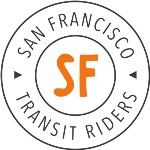By Dylan Fabris, SFTR Community and Policy Manager
By now, we’ve all seen the outcome of the election last month. Donald Trump is once again our president-elect, Muni funding failed at the ballot, and Daniel Lurie will be our new mayor. What does this all mean for public transit in San Francisco as Muni and BART face major budget deficits in the next few years?
Federal
History shows that we can expect the Trump White House to be actively hostile to public transit. In his previous term, Donald Trump proposed multiple cuts to public transportation in the federal budget, including cuts to city transit projects and Amtrak, and he shifted federal grants to highly prioritize road projects over public transit projects.
GOP control of Congress also means that any new transportation funding for San Francisco will be an uphill battle, especially for the day-to-day operational funding that our local and regional agencies need. Historically, the federal government has only provided significant transportation funding for “capital” projects that fund things like infrastructure and equipment, rather than the operational costs that agencies need to pay to run continuous service. The federal government stepped in to provide some operational funding during the pandemic, but that money is running out, leading to the major deficits our transit agencies are now facing.
Local
Proposition L, the grassroots measure to fund Muni by taxing ride-hail corporations like Uber and Waymo — won majority support with 56.9% of the vote, but failed to gain more “yes” votes than Proposition M, a tax-reform measure that contained a “conflict clause” which cancelled out Prop L. Because of Proposition M, the 210,375 votes in favor of Muni funding were overruled.
The seeds of what eventually grew into Prop L were planted years ago when San Francisco Transit Riders convened the Transit Justice Coalition, a group of local organizations dedicated to creating and funding a sustainable and equitable public transit system in the city. The coalition created a report that outlines what an equitable transit system should look like for San Francisco and suggests a ride-hail tax as a potential funding source for those changes.
Naturally, the outcome of the campaign was rough for us and the hundreds of volunteers who poured their hearts, time, and money into this campaign. Harder still will be the service cuts we expect to face as soon as next year if additional funding isn’t identified — the first cuts have already been announced. (Future SFTR blog posts will cover the Muni “doomsday” service cuts scenario that the agency recently unveiled at the city’s Muni Funding Working Group, which shows what Muni service will look like if the full fiscal cliff is left unaddressed.
San Francisco Transit Riders is looking forward to working with the Lurie administration to help the Mayor understand the needs of transit riders and the importance of a full and thriving Muni system in achieving his vision for San Francisco.
Read the full piece!
